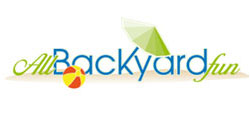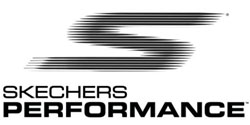Posts tagged students
CU team helps find the “God” particle
Jul 5th
Multinational team searching for answers about dark matter, dark energy, gravity and the fundamental laws of physics.
An international team including University of Colorado Boulder researchers has found the first direct evidence for a new particle that likely is the long sought-after Higgs boson, believed to endow the universe with mass.
Comprised of thousands of scientists, students and support staff working at the European Organization for Nuclear Research, or CERN, the team has been conducting experiments at a facility known as the Large Hadron Collider, a $10 billion, 17-mile underground loop below the Swiss-French border in Geneva that is the world’s most powerful atom smasher. Scientists have been using the LHC to attempt to recreate conditions immediately following the Big Bang by smashing protons together, searching for answers about dark matter, dark energy, gravity and the fundamental laws of physics.

Higgs boson particle thought to give other particles their mass
A huge target of the LHC effort has involved looking for evidence of the elusive Higgs boson, a theoretical elementary particle that has been predicted by physicists. Thought to give other elementary particles their mass, the Higgs boson is the only particle predicted by the Standard Model of particle physics — a scientific theory of how the universe works at the simplest level — that has not been directly detected.
The CERN team is reporting evidence today of an anomalous “bump” in a particular search region of the energy spectrum targeted by the scientists that has a mass of about 125 billion electronic volts, or 125 GeV, said CU-Boulder physics Professor John Cumalat. The research team designed their searches around the theoretical expectations for the decay of the Standard Model Higgs boson particle, he said.
“What we have found is incontrovertible evidence for a new particle at around 125 GeV,” Cumalat said. “To prove it is the Standard Model Higgs particle we will need to carefully measure the new particle’s properties, but with more data these properties can be determined.”

Inside the Large Hadron Collider
The CU-Boulder high-energy physics team, which includes 15 faculty and students, is involved with the Compact Muon Solenoid, or CMS, one of two massive particle detectors in the LHC and which weighs more than 12,500 tons. The CU team helped design and build the CMS forward pixel detectors — the “eyes” of the device — that help researchers measure the direction and momentum of subatomic particles following collisions, providing clues to their origin and structure.
CU-Boulder Professor William Ford said there were strong hints of the existence of the Higgs boson particle during the CMS particle collisions in 2011. “Now, with the new data looking so similar, it’s hard not to be a believer,” he said. The CERN team hopes to accumulate about four times as much data as they have now on the Higgs boson search project by the end of the year, according to Ford.
“God particle” would being mass and order to the universe
While the Higgs boson was nicknamed “The God Particle” by physicist and Nobel laureate Leon Lederman because its existence would bring mass and order to the universe — a nickname that has been seized on by the media — it is a term physicists do not particularly care for because of its connotations, said Cumalat.
The existence of the Higgs boson theory is crucial to helping to explain the underpinnings of the universe by confirming the Standard Model of physics that explains why fundamental particles — the building blocks of the universe — have mass. Mass is a trait that combines with gravity to give an object weight. Without Higgs boson, there could be no galaxies, stars, planets or people, say researchers.
“It is a very exciting time to be in particle physics and to be involved in an experiment unlocking the meaning of mass,” said CU-Boulder doctoral student Brian Drell.
In addition to Cumalat, Ford and Drell, there are 12 other CU-Boulder people involved in the project: faculty members Uriel Nauenberg, Jim Smith, and Steve Wagner; postdoctoral researchers Alessandro Gaz, Eduardo Luiggi, Keith Ulmer, and Shilei Zang; graduate students Bernadette Heyburn, Andrew Johnson and Troy Mulholland; and technical staff members Eric Erdos and Douglas Johnson.
Sixteen years in the making, the $3.8 billion LHC project involves an estimated 10,000 people and staff from 60 countries, including more than 1,700 scientists, engineers, students and technicians from 94 American universities and laboratories supported by the U.S. Department of Energy’s Office of Science and the National Science Foundation. The United States is providing about $530 million, primarily for the LHC detectors.
Coming to CU: High-tech hallucinogenic "Swarm Wall"
Jun 4th
A monthlong summer exhibit at the University of Colorado Boulder Art Museum will feature a dynamic new media composition based on innovative robotics technology.
Called “Swarm Wall,” the large-scale interactive piece displays changing fields of color, light and sound that are driven by a distributed form of artificial intelligence.
As many as 70 intelligent “nodes” behind the piece create a swarming effect when they detect movement and communicate it with one another. The nodes exhibit swarm behavior because each performs actions solely based on its own plan and the actions of its immediate neighbors.

The 42-by-12-foot installation is the first product from a new art and technology research group on campus. The group was launched by faculty members Michael Theodore of the College of Music, who received a $44,000 grant from CU’s Innovative Seed Grant Program last year to support the collaboration, and Nikolaus Correll of the computer science department.
Also involved in the Swarm Wall is Ken Sugawara, a visiting computer science professor from Tohuku Gakuin University in Japan who is an expert in animal flocking behavior, the inspiration behind the patterns the wall displays.
The seed grant, which Correll and Theodore say already has helped them attract additional funding, was the first step toward establishing an active lab where students, faculty and professional researchers from various disciplines collaborate on cutting-edge applications of artificial intelligence.
“We’re now calling it the ‘if’ lab because we want to see what happens if artists put engineers in front of tough problems,” said Correll, who is providing space for the growing group within his own robotics laboratory in the Engineering Center at CU-Boulder.
“We want to assemble some basic, inexpensive tools that students can use to explore and to develop new applications of robotics,” Correll said.
Scattered around the lab last week were a collection of small custom circuit boards, electronic panels, items resembling ping pong balls and various other components that are being used to assemble robotic devices.
An assembly of circuit boards connected with bright orange cables also was mounted on a partition in the lab in preparation for the installation of Swarm Wall. Small mechanical arms or flippers waved back and forth as the “brains” behind the Swarm Wall were tested. Sometimes the movement was synchronized, while other times a ripple effect would occur in response to some stimuli.
“Artistic exploration can help computer scientists and engineers to ask questions they wouldn’t have otherwise asked,” said Theodore, who also serves as director of the ATLAS Center for Media, Arts and Performance.
“The difference between arts and science is very diffuse; both want to discover new things,” Theodore said. “The cool thing about art is that we can explore systems that are not of interest to classical funding agencies, but might be so after maturing in a lab like the ‘if’ lab.”
Swarm Wall is one of four pieces in “Michael Theodore: Field Theory,” an exhibition of kinetic sculpture, sound, lighting and works on paper, running June 15 through July 14 at the CU Art Museum. The exhibition is free and open to the public. An opening reception will be held on June 15, from 6 to 8 p.m. For additional information, visitors may call the CU Art Museum at 303-492-8300 or go to http://cuartmuseum.colorado.edu.
Boulder water festival for students to be held on Wednesday
May 14th
20th annual Boulder Water Festival teaches students how to conserve and protect water
More than 1,100 4th and 5th grade students from 45 classrooms in 17 Boulder area schools will participate in the 20th annual Boulder Water Festival from 9 a.m. to 2 p.m. on Wednesday, May 16, at the University Memorial Center (UMC) on the University of Colorado at Boulder campus, 1669 Euclid Ave.
The nationally recognized water festival engages local students in hands-on activities about where Boulder’s drinking water comes from and how to protect and conserve this valuable natural resource. Students attend a series of classes to discover the geography, history, and science of water; explore the Boulder Creek watershed and its geology; and study the animals and plants that rely on water for survival.

Participating classes also complete the “Operation: Water Festival” program, a standards-based series of pre-festival classroom learning activities. The program provides a complete teacher’s packet featuring lesson guides, student worksheets and trivia questions for each water topic. Topics include fundamental water awareness, conservation, pollution prevention and flooding. Student “Water Agents” receive a certificate upon completion of the classroom activities.
A key benefit of the “Operation: Water Festival” materials is a take-home book for families. The book encourages students to work with family members to complete activities related to local water resources, conservation and protection.
“Students really have a complete learning experience,” said Samantha Messier, science director for the Boulder Valley School District (BVSD). “This provides a great learning tool to help students learn about one of our most important natural resources in Colorado.”
The Boulder Water Festival will commemorate its 20th anniversary as part of the statewide celebration of 2012, The Year of Water in Colorado. Nearly 19,000 BVSD and Boulder area students have participated in the festival since its inception in 1992.
Festival sponsors include the City of Boulder, the Keep it Clean Partnership, Northern Water, the UMC, CU Boulder’s Office of Community Relations and the U.S. Bureau of Reclamation.
For more information, contact Curry Rosato, City of Boulder watershed outreach coordinator, at 303-829-9316.





















